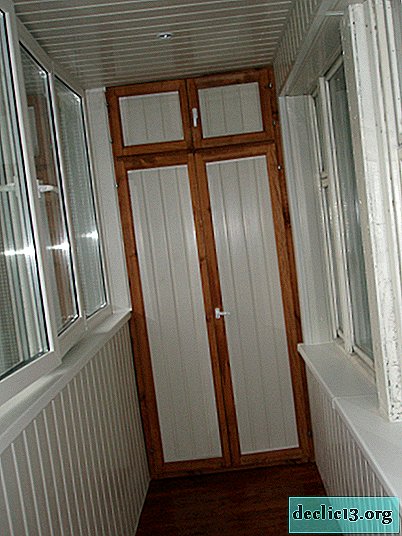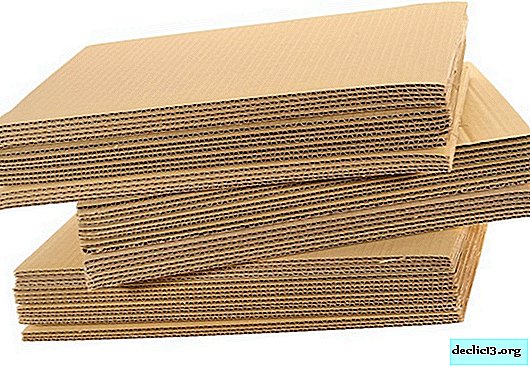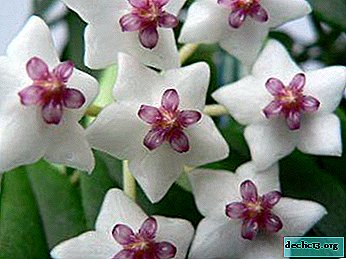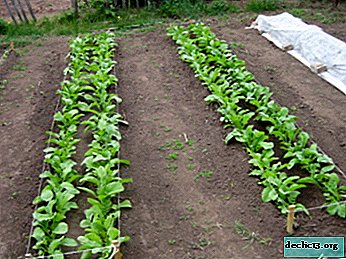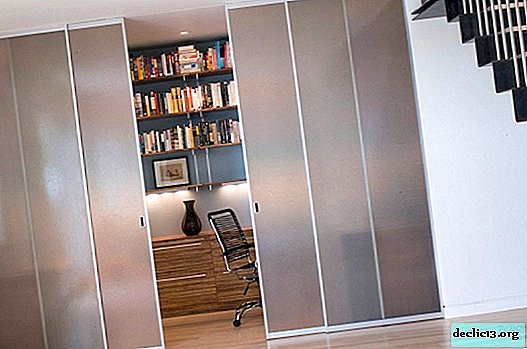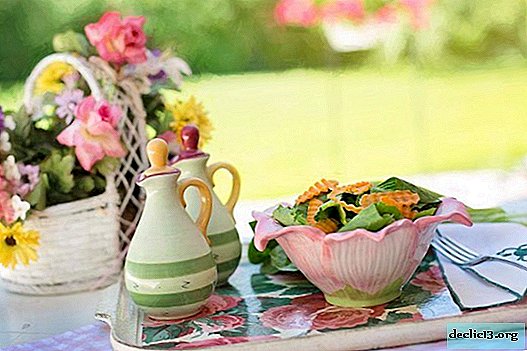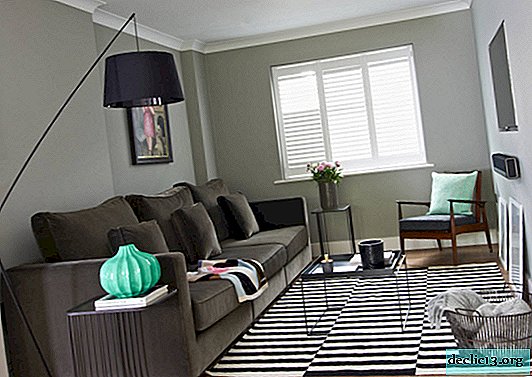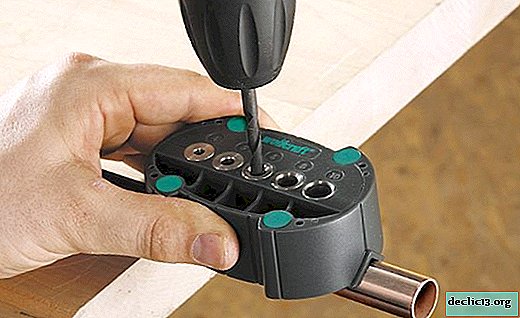"Voodoo" is one of the varieties of false sedum. Growing features, planting tips and other nuances
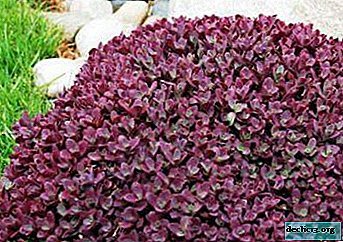
Sedum (Latin: Sedum) is a succulent from the family Crassulaceae. In nature, there are about 350 species of perennial, less often one and two year old, plants and undersized shrubs. Currently, about 100 species are cultivated. The range of Sedum growth is diverse: from Eurasia to South America - therefore, you can find tropical and frost-resistant species, evergreen and wilting, miniature and large. Some types of stonecrops grow in mountainous regions, while others are located in meadows and clearings.
There are several interpretations of the origin of the name of the plant: from the Latin "sedere" - "sit" or "sedo" - "calm." Sedum in the people has many names: stonecrop, juvenile, rabbit cabbage, feverish or hernial grass. Next, you will find out what this plant is, what are the features of growing from seeds, cuttings, bushes, when to plant it and what care does it take.
Description
Botanical characteristics, homeland and prevalence
Stonecrop false "Voodoo" (Sedum spurium voodoo) - perennial plant found in nature in regions with a temperate and northern climate: in Western Europe, the Caucasus, Asia Minor, Crimea, Turkey and Iran. Refers to the creeping variety of sedums. Growing, creates a dense rug of flowers. It blooms for about 2 months, beginning in late June.
Appearance
The leaves are fleshy, glossy, opposite, sessile, green with a burgundy red tint. It has small bright pink-colored flowers in the form of stars, collected in umbrella inflorescences. Height of peduncles on average 10-15 cm.
So the photo looks like a stonecrop false "Voodoo"



Is it easy to grow a plant and how long does it live?
Stonecrop is hardy and grows very well and quickly takes root at home and in the open. A distinctive feature of sedum is that it stores water in leaves and stems, therefore, it feels great in dry periods. Stonecrops, due to their unpretentiousness, are long-lived plants. They are rejuvenated by transplantation every 4-5 years.
Reference! Due to its external attractiveness, variety and ease of cultivation, sedum is often used in landscape design.Care
| Conditions | Recommendation | Comments |
| Lighting | Sedum is a false voodoo plant is a sunflower. In the shade, it begins to bloom worse, and the leaves begin to turn green. Optimal lighting - sun or partial shade. | With insufficient lighting, the leaves begin to turn green and lose a reddish tint, it is also possible to stop flowering. |
| Temperature | The optimum temperature in the summer is 20-30 degrees. In winter, to minus 20 degrees. | Landing is recommended at the end of May, when the threat of repeated frost passes. In the future, the plant does not need to be covered from frost (frost-resistant). |
| Location | It will take root well in rockeries, a mixborder on a flower bed or an alpine hill. Can be used to secure slopes. | Not suitable for planting in tight spaces, as it tends to grow. |
| Watering | Not frequent, only in dry weather. | From excess moisture can begin to rot and be affected by disease. |
| Air humidity | It does not tolerate stagnation of moisture in the soil. | Well drained soil is required. |
| The soil | Soil is preferred poor and dry with a low content of humus or compost: sandy, rocky, gravel. | In nature, this species grows on the most unpretentious soils, even in cracked stones. |
| Top dressing | Nutrient soil and overfeeding plants are fraught with a loss of resistance to cold, so mineral fertilizers are not recommended to be abused. It is permissible to feed organic matter in liquid form before flowering and at the end. | Typical leaf color appears only on poor soils and poorly fertilized soils. |
| Pruning | It is necessary to remove faded peduncles. With the onset of cold weather, you can trim the plant, leaving about 5-7 cm above the soil level. Pruning is also carried out during the “waking up” period (in March-April). | Periodically, you can carry out selective pruning during the flowering period and remove faded peduncles. |
Breeding
Cuttings
Vegetative propagation is used for creeping and undersized varieties that produce aerial roots, often used as cuttings. Cuttings root in the spring in a separate area or in a greenhouse. Due to the ability to root quickly, a high percentage of successful breeding is observed.
Seeds
Seeds for seedlings are planted in the spring (in March or early April):
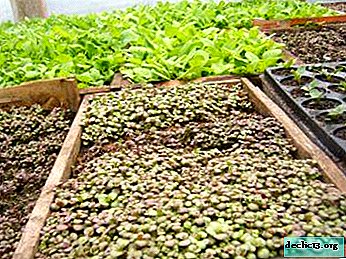 Previously, the seeds are placed in a container with sand, covered with a film and placed in the lower compartment of the refrigerator or a cool cellar.
Previously, the seeds are placed in a container with sand, covered with a film and placed in the lower compartment of the refrigerator or a cool cellar.- Sand and garden soil in equal proportions are poured into the seedling containers.
- Seeds are planted on the surface (a hole in the soil about 0.5 cm), at a distance of 3 cm from each other.
- Planted seeds are sprayed with water from a spray bottle and covered with a film or glass to create a greenhouse effect (at a temperature of 18-20 degrees). It is necessary to carry out a systematic ventilation of the "greenhouse" and moisten the soil.
- After 2-4 weeks, seedlings will begin to appear; when a plant has more than two leaves, they need to be dived.
- When the seedlings grow, they need to be planted in separate containers for growing.
- Before planting seedlings in open ground, the plant is hardened, taking it to fresh air.
Bush division
This method is suitable for tall species. Reproduction is carried out in the spring. The plant is dug up, and the rhizome is divided into two parts with buds and roots. Then the bushes are dried and planted in a permanent place.
Landing
Sedum is planted in the ground at the end of May. Before boarding, you must:
- prepare a mixture of sand and garden soil;
- dig holes at least 20 cm deep and at least 50 cm in diameter;
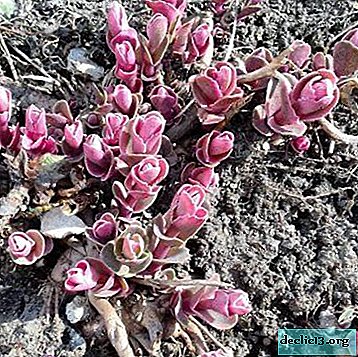 between the seedlings, a distance of at least 20 cm should be maintained so that they do not compete for space and do not interfere with each other's growth;
between the seedlings, a distance of at least 20 cm should be maintained so that they do not compete for space and do not interfere with each other's growth;- at the bottom of the hole is placed drainage (gravel), then the soil mixture;
- seedlings are planted (in a recess, the size of a root), sprinkled with the remaining mixture, pressed by hands and watered (not abundantly).
After planting, minimal care is required:
- remove weeds;
- maintain optimal humidity (do not overfill);
- do not zealous with fertilizers;
- monitor for enough sunlight;
- for the winter, you can cover the plant with leaves with a pallet, be sure to remove it immediately after the snow melts.
Content difficulties
The main difficulty in maintaining sedum is constant weeding and thinning.providing sufficient growth and development of the plant. In areas with a humid climate, there is a high probability of yellowing and decay of the plant, as well as the appearance of pests.
Stonecrop false Voodoo - can be a great solution for decorating the garden with a plant that spreads a magnificent red carpet for the summer. Due to the fact that in nature sedum lives in areas with a temperate climate, its breeding in our latitudes will not present a great difficulty. It is unpretentious and does not require careful care after planting.

 Previously, the seeds are placed in a container with sand, covered with a film and placed in the lower compartment of the refrigerator or a cool cellar.
Previously, the seeds are placed in a container with sand, covered with a film and placed in the lower compartment of the refrigerator or a cool cellar. between the seedlings, a distance of at least 20 cm should be maintained so that they do not compete for space and do not interfere with each other's growth;
between the seedlings, a distance of at least 20 cm should be maintained so that they do not compete for space and do not interfere with each other's growth;
